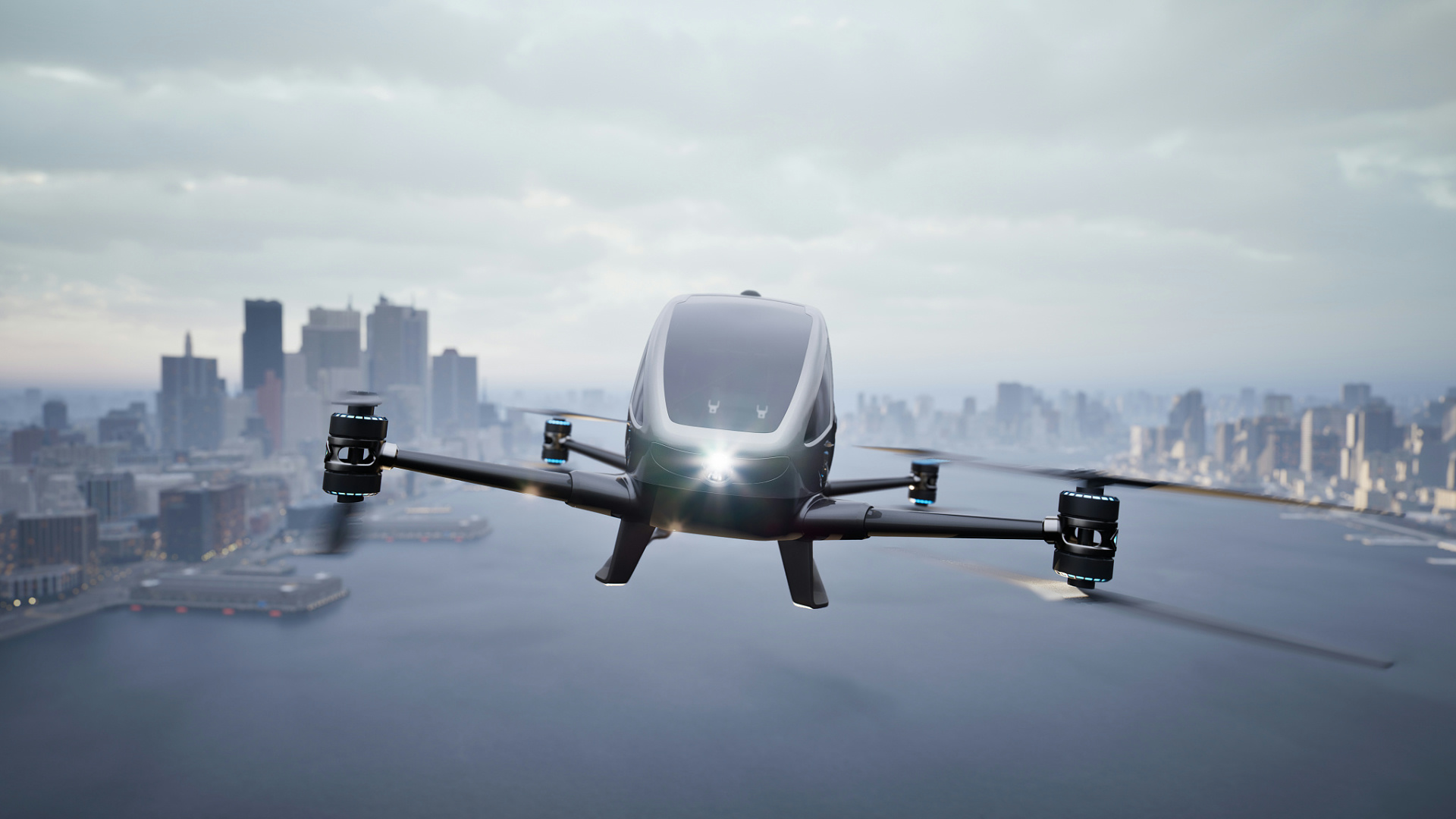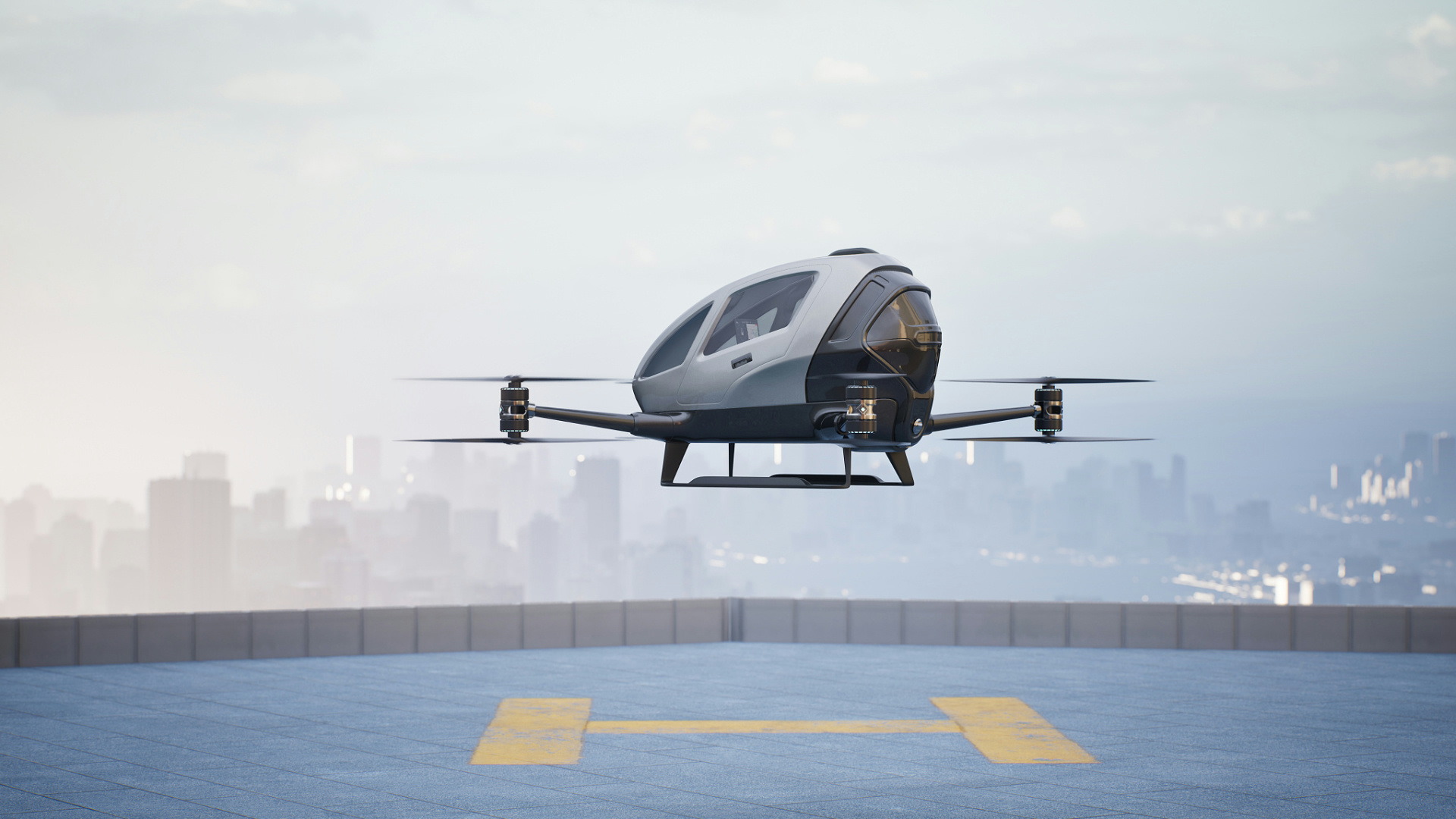Comparison of Chinese and American eVTOL Companies – Low-Altitude Economic Opportunity KellyOnTech
The Next Economic Growth Opportunity in the World
What is the next economic growth opportunity that the world is developing?
It is the low-altitude economy.
According to the official definition, Low-altitude economy refers to a comprehensive economic form based on civil manned and unmanned aircraft, driven by low-altitude flight activities in multiple scenarios such as manned flights, cargo delivery, and other such operations. All of which will drive the integration and development of related areas.
2024 will be known as the first year of low-altitude economy. But talking about the low-altitude economy is inseparable from the previously introduced flying car, also known as eVTOL, electric vertical take-off and landing.

According to Allied Market Research, the global flying car market is expected to grow at a CAGR of 34.1% between 2026 and 2035 as urban air transportation infrastructure develops.
How Low is Low Altitude
In December 2023, the Civil Aviation Administration of China (CAAC) released a “Basic Classification Method for National Airspace. According to this classification method, China’s airspace is divided into two categories: controlled airspace and uncontrolled airspace.
The uncontrolled airspace is further divided into two categories: G and W.
· G airspace refers to most of the airspace with a true height below 300 meters, and airspace where the average sea level is below 6,000 meters, which has no impact on civil aviation and public transportation flights.
· W airspace refers to the airspace with a true-height below 120 meters in the previous Class G airspace, allowing unmanned pilots to operate on the ground.

The so-called low altitude, according to the two categories of G and W airspace happens to be the airspace for the flight of traditional air traffic aircraft, new energy aircraft, and small unmanned aerial vehicles (UAVs). Dividing them into uncontrolled area is equivalent to lowering the regulatory requirements for flight equipment in this airspaces, which means the regulatory authorities intend to lay the foundation for the pilot operation and commercialization of eVTOL.
Note: True height is relative to altitude. It refers to the height of the aircraft directly below the location of the reference plane, up to the height of the probe.
Comparison of Flying Vehicles (eVTOL) Companies between China and the U.S.
On January 1,2024, the “Interim Regulations on the Administration of Unmanned Aircraft Flight Management” came into force in China. Flying cars must obtain three certificates before entering the market: type certificate, production license and single aircraft airworthiness certificate. Similarly, flying cars operating in the United States also require three certificates.
Let’s compare the two head eVTOL companies in China and the United States.

Joby Aviation vs. EHang
Joby Aviation and EHang are both public traded companies.
Founded in 2009, Joby Aviation is listed on the New York Stock Exchange (NYSE), and on July 29,2021 began applying for an airworthiness certificate, becoming the world’s first eVTOL airline. The California-based company is the first, and so far only, electric air taxi company to have final airworthiness standards published by the Federal Aviation Administration (FAA).
Established in 2014 and listed on the NASDAQ, EHang is committed to becoming a world-leading urban air mobility (UAM) tech company, allowing everyone to enjoy the safe, automatic and environmentally friendly air transportation. EHang provides a variety of unmanned aircraft products and solutions to customers in multiple industry sectors around the world, covering air transportation (including manned transportation and logistics transportation), smart city management and aerial media. EHang’s flagship product EH216-S has obtained the world’s first unmanned eVTOL aircraft type certificate (TC), production certificate (PC) and standard airworthiness certificate issued by the Civil Aviation Administration of China (CAAC).
eVTOL Design Comparison
Joby Aviation’s all-electric aircraft is designed to carry a pilot and four passengers and operates with zero emissions. The aircraft has a range of 150 miles, approximately 241 kilometres, and can reach a speed of up to 200 miles per hour, equivalent to 322 kilometres per hour, and features revolutionary low noise levels. The Joby S4 is priced at $2 million per unit.
EHang focuses on developing unmanned passenger flying cars. The company produces flying cars that can be used in applications such as air mobility, logistics, firefighting and aerial photography. Its main product, the EH216-S, is a two-person multi-rotor aircraft designed for urban air mobility. After obtaining the production certificate (PC)in early April, EHang will enter the commercialization stage in 2024 to mass-produce the EH216-S, with a unit price of $330,000 USD.
EHang is also developing a long-range eVTOL model, the VT-30, which will apply CAAC certification this year. EHang produces all its aircrafts in-house, with an annual output of 600 aircraft.

Partnerships
In addition to their respective local layouts, both companies have coincidentally chosen Middle East countries to establish partnerships.

Joby Aviation expands its UAE partnership,signing a multilateral agreement with three departments of the Abu Dhabi government to support the development of an electric air tax ecosystem in the emirate. A recently signed agreement with the Dubai government grants Joby Aviation exclusive rights to operate air taxis in the emirate.
The company has also gained the trust of the U.S. military industry. In early 2020, its eVTOL received military airworthiness approval and signed a contract to deliver nine flying cars to the U.S. government. In March 2024, Joby Aviation announced that it would deliver two aircraft to MacDill Air Force Base in 2025.
In December 2023, EHang joined the Smart & Automatic Vehicles Industry Cluster,and established a strategic partnership with Wings Logistics Hub. In April 2024, EHang entered into a strategic partnership with the Abu Dhabi Investment Office and MLG to promote the development of eVTOL in the UAE.
Financial Status
Joby Aviation continues to lose money, with a net loss of $258 million for the full year of 2022 and a net loss of $513 million for the full year of 2023. Still, the company has strong investors to support its continued growth. In addition to Toyota and Uber, South Korea’s SK Telecom also invested $100 million in June 2023. At the end of the first quarter of 2024, Joby Aviation’s balance sheet remained solid with $924 million in cash and short-term investments.

In comparison, EHang’s total revenue for the full year of 2023 was 117.4 million yuan, (US$16.5 million), a year-on-year income increase of 165%. Adjusted net loss was 138.8 million yuan, (US$19.6 million), an improvement of 32.7% compared with the loss of 206.2 million yuan (US$28.53 Million) in 2022. To achieve the need for high energy density, EHang strategically invested in solid-state lithium metal battery technology last September, led by Shenzhen Inx Technology.
Future Plan
Joby Aviation achieved its first manned flight in October 2023, followed by a live demonstration in New York city, and if all goes well, it is expected to officially begin air taxi operations in 2025.

In 2023, EHang delivered 52 units of the EH216 series, a significant increased from 21 units in 2022. The local government has also placed several large orders, including an intention to order 100 units from Wuxi. In addition, EHang’s long-term expansion efforts in the United Arab Emirates have yielded results. Wings Logistics Hub, a company in the UAE, has expressed its intention to purchase 100 EH216-S units.
In the first quarter of 2024, EHang expects revenue to be $58 million, a year-over-year increase of 165%. They also expect positive quarterly growth in every quarter of 2024. In terms of profitability, EHang expects the company to achieve full-year profitability in 2025.




